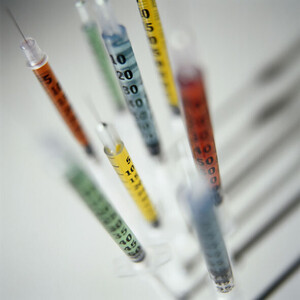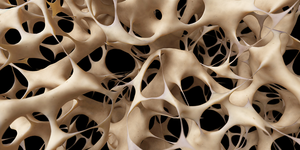On 11 March 2009, Henry Waxman, Frank Pallone, Nathan Deal, and Jo Ann Emerson, all members of the US House Committee on Energy and Commerce, introduced the Promoting Innovation and Access to Life-Saving Medicine Act (bipartisan bill HR 1427), to allow the US FDA to approve affordable ‘biosimilar’ copies of biotech drugs or ‘biologicals’.
US biosimilars bill with competition after just five years
Biosimilars/News
|
Posted 29/07/2009
 0
Post your comment
0
Post your comment
The bill provides the FDA with authority to ensure that any approved copy of a biotech drug is just as safe and effective as the original product, and provides the makers of new biotech drugs ample incentives for continued innovation, according to its authors.
“I believe this bill will lead to healthy competition and long-term savings for patients and payers, and will preserve innovation in the biotech marketplace,” said Mr Waxman, Chairman of the House Energy and Commerce Committee. “Above all, this bill guarantees that FDA has the scientific discretion to hold these drugs to the same high standard to which the original products are held. The only way we can succeed in establishing robust competition for biotech drugs is with biosimilar drugs that doctors and patients know they can count on.”
“By creating a pathway for generic biologics, we hope to increase access to these life-saving drugs, lower prices and spur innovation,” said Mr Pallone. “This bipartisan legislation empowers the FDA with the flexibility and authority it needs to ensure that generic products are safe and effective. With this legislation, we are ending the monopoly on biologics, and I look forward to working with my colleagues to pass it quickly.”
However, while the research-based industry has been calling for 14 years’ market exclusivity for their original products before copy versions could be launched, the bill gives just five years’ exclusivity for biological drugs with a novel molecular structure. Orphan products for the treatment of rare diseases would have seven years’ exclusivity, but for straightforward reformulations the period would be up to three years.
Another of the bill’s sponsors, Nathan Deal, pointed out that biological drugs often cost on average 22 times more per daily dose than chemical medications, and the most expensive can cost well over US$100,000 (Euros 71,800) per year. “It is expected that approximately 50% of all drugs approved in 2010 will be a biopharmaceutical, a projection which only underscores the need for this legislation as the strain on state and federal governments grows. As the pharmaceutical market is further saturated by biologicals, mechanisms must be put into place to promote competition and continued innovation,” he added.
According to Mr Deal, generic and brand name companies alike are now planting their seeds in the emerging follow-on biologic market and US Congress should make every effort to support these efforts with the best interest of patients in mind. “This sensible, consumer-focused legislation represents a dramatic first step in passing legislation to establish an approval and regulatory pathway for biological products and I am pleased to join Chairman Waxman and Chairman Pallone in co-sponsoring the Promoting Innovation and Access to Life-Saving Medicine Act,” he said.
Ms Emerson said she was pleased to be a part of a commonsense effort at this bipartisan bill to bring generic versions of name-brand biological medicines to market. “Across the country, Americans who cannot afford name-brand biologicals have been left with no alternatives to their high prices for decades. This bill would create access to affordable generic versions of their prescriptions during an especially difficult economic time for many American families and senior citizens on fixed incomes. Generic medicines are widely relied upon in our country, and consumers deserve generic versions of biologicals, which are some of the most expensive drugs on the market.”
This bill has unusually broad support from a wide spectrum of affected groups, including businesses, payers, patient groups, consumer groups, and unions. It has been endorsed by, among others, the Consumers Union, AARP, the National Organization of Rare Disorders, the Coalition for a Competitive Pharmaceutical Market, General Motors, Express Scripts Inc, the National Business Group on Health, the AFL-CIO, and the SEIU.
The bill was also welcomed by the Generic Pharmaceutical Association (GPhA), whose Chief
Executive, Kathleen Jaeger, said: “During these difficult economic times, there must be increased urgency to support solutions that strengthen health care while reducing costs.” The bill “is the right solution for high quality care at affordable costs,” she added.
However, the Biotechnology Industry Association (BIO) said the bill “seeks to cut prices but instead cuts corners,” and would take patients and industry “down the wrong path.” Its passage would jeopardise the continued development of new breakthrough therapies and potential cures for debilitating diseases and also industry’s “ability to help meet President Obama’s call for a cure for cancer ‘within our time’ and help realise the promise of stem cell research,” warned BIO’s Chief Executive, Jim Greenwood.
“A pathway must recognise that biologics are much more complex than traditional pharmaceuticals and that the regulatory standard for approval of biosimilars will be based on similarity rather than sameness as is the case with traditional generic drugs,” he noted, adding: “we can take no short cuts to safety when it comes to biosimilars.”
A companion bill is expected to be introduced in the Senate shortly.
Source: Committee on Energy and Commerce, PharmaTimes
Research
Reaching ESG goals in pharmaceutical development
What is the future for the US biosimilar interchangeability designation
General
Samsung Bioepis wins Pyzchiva case; Regeneron patent rulings threaten foreign biosimilars
Chinese biosimilars go global: growth, partnerships, and challenges
EMA recommends approval for four biosimilars targeting three therapies

Biosimilars/News Posted 10/10/2025
FDA approves first interchangeable rapid-acting insulin biosimilar, Kirsty

Biosimilars/News Posted 03/10/2025
The best selling biotechnology drugs of 2008: the next biosimilars targets








Post your comment